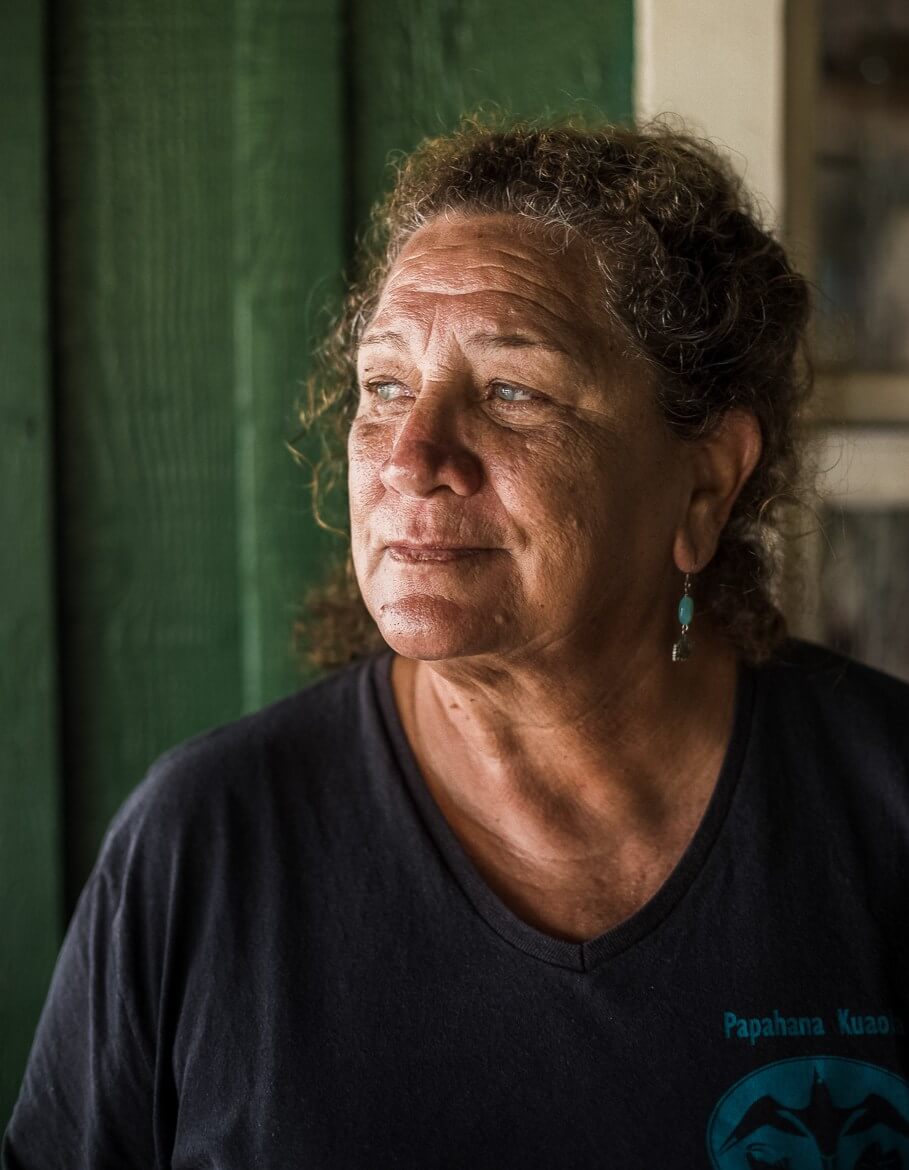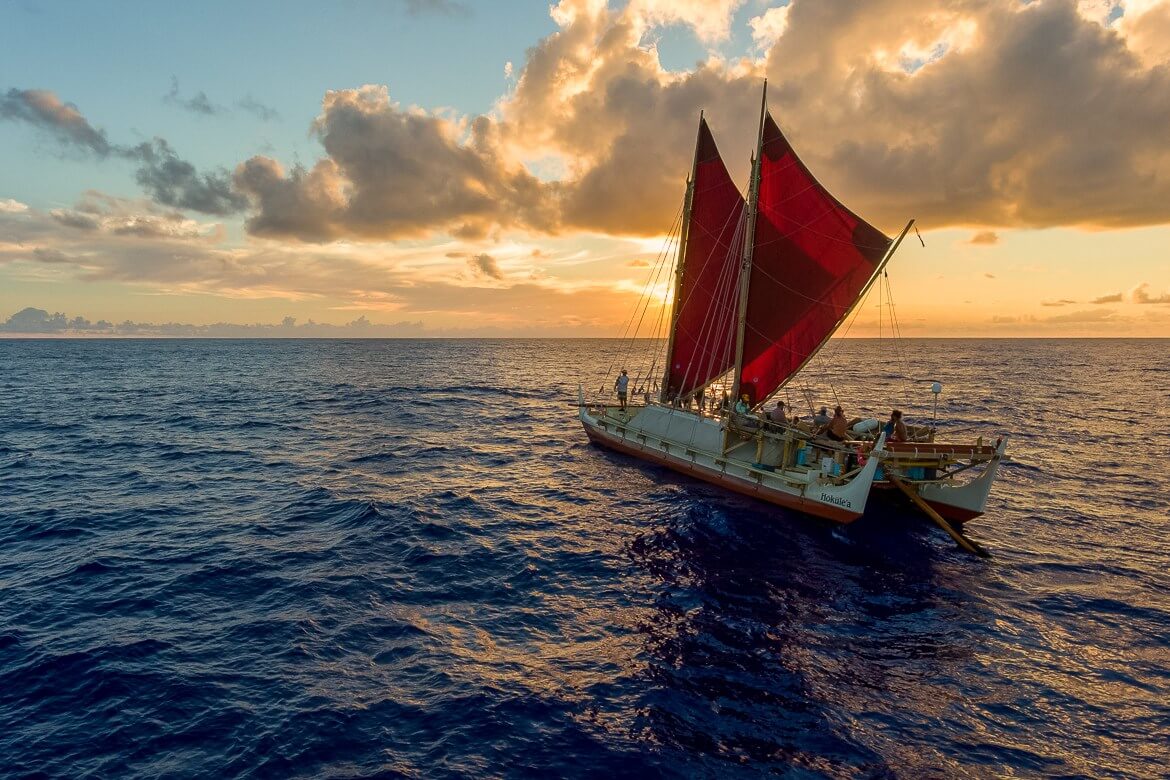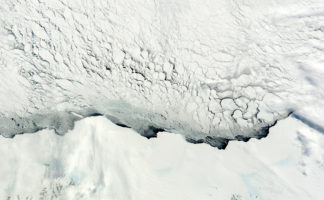Support Hidden Compass
Our articles are crafted by humans (not generative AI). Support Team Human with a contribution!
The Pacific was roaring. Between bouts of seasickness, Penny Rawlins Martin looked out over her sea canoe’s edge at the churning waters. A tropical storm was closing in halfway through the 2,250-mile journey from Tahiti to her native Hawaii.
The year was 1976. Hokule’a, a double-hulled sailing canoe of the Polynesian Voyaging Society, was making its maiden voyage, just as the ancient Polynesian explorers once did. Penny is Native Hawaiian, as are nearly 50% of the people living on her island of Molokai. Approximately 1500 years earlier, using only nature’s compass — celestial bodies, the direction of the wind, and the swells of the waves — Penny’s ancestors had crossed this same ocean to settle in Hawaii.
Hokule’a swung wildly in the thrashing water, as the crew scurried around her deck, stowing items and donning foul weather gear. Lines were checked and secured. Everyone was counted. Then, they braced themselves.
~~
Back on land, the rain fell in curtains of gray, spilling onto the porch, as my friends and I sat around Anake (Auntie) Penny at the Coffees of Hawaii Cafe on Molokai. Palm trees swayed with gusto, their thin trunks holding onto dear earth. It was sunny just a little while ago when we walked the Kamalo Harbor together — but the weather can change quickly here.
Penny introduced herself as a guide of Papahana Kuaola, a local program teaching students and visitors about the culture and history of Molokai by way of mo’olelo (stories) that have been passed down for generations. Her long, curly, graying hair blew gently in the wind, and in the morning light, her sun-kissed skin glistened. Hardened by decades of paddling, her tall, strong frame barely showed her mid-60s age. Her voice changed when she reminisced about Hokule’a.

In 1976, Native Hawaiian, Penny Rawlins Martin, was one of the first women to retrace an ancient voyage from Tahiti to Molokai. PHOTO: CELESTE NOCHE.
“It was the most beautiful thing I’ve ever seen sail into the harbor,” she said. “I had very little experience, but I knew I wanted to be a part of the voyage.”
The newspaper headline the day they set sail read, ‘All Male Crew Plus Two.’
Measuring 62 feet long and weighing five and a half tons, Hokule’a was built with plywood, fiberglass and resin. Though Polynesian predecessors relied on tree trunks, bark and bamboo to build their canoes, Hokule’a came close to their design, with twin masts, crab claw sails and a long paddle. The vessel didn’t have any nails or screws; small wooden pieces the size of fingers were lashed together to shape her like a traditional canoe.
The builder, Herb Kawainui Kāne, one of the founders of the Polynesian Voyaging Society, named Hokule’a after the “Star of Gladness” that appeared to him one night in a dream. The star has another name — Arcturus, the zenith star. Passing directly above Hawaii, it is a beacon that has been guiding sailors to the archipelago for more than a thousand years.
~~
When Penny learned that Ben Finney, one of the founders of the Polynesian Voyaging Society, was coming to Molokai to recruit crew members native to the islands, she couldn’t wait to participate.
She attended the recruitment and asked, “Are you going to take women?”
“We won’t have women.”
But Penny didn’t let that stop her. She lobbied two of the vessel’s crewmen on a plane ride from Molokai to Oahu, causing the Polynesian Voyaging Society to reconsider. In the end, the organization decided to allow two women to join Hokule’a’s historic sail from Tahiti to Oahu. Penny, only 23 years old at the time, was selected, along with a paddler from Kauai named Kiani Reiner.
When the time came for training, however, the vessel needed work. Having swept off of Kauai prior to arriving in Oahu, Hokule’a was in the process of being resurrected: Her two hulls sat disconnected on separate drums. Before setting sail, Penny and the new recruits gathered the necessary materials and put Hokule’a back together.
On May 1, 1976, a volunteer crew of 17 men made the initial 2,250 nautical mile journey from Maui’s Honolua Bay to the South Pacific. Upon arrival into Papeete Harbor, half of Tahiti was there, with more than 17,000 people celebrating the great heritage they shared.
Then, the 13 member return crew — including Penny and Kiani — flew to Tahiti. They were in charge of bringing the vessel back to Hawaii within three to four weeks, depending on the weather.
The newspaper headline the day they set sail read, “All Male Crew Plus Two.”
~~
“Once I got over my seasickness and got my sea legs, I felt a great sense of freedom being detached from land and only having to worry about the wa’a (canoe) and each other,” Penny told me.

Hokule’a was built to mimic the design of 1500-year-old Polynesian canoes, but with plywood, fiberglass and resin, instead of tree trunks, bark, and bamboo. Its crew sailed for 21 days through tropical storms and across 2,250 miles of open Pacific Ocean. PHOTO: COURTESY OF THE POLYNESIAN VOYAGING SOCIETY.
The crew feasted on fish and used rainwater for drinking and washing clothes. The only protection from the blistering sun was the pup tent covering the narrow sleeping quarters along each hull. They bathed sitting in a net slung between the hulls, or in the back, pulling salt water up in a bucket.
Going to the bathroom in an open-railed canoe, where everyone was living in a small space, was not a private activity. “We had to strap on a harness and relieve overboard while standing or sitting on the outside of the hull,” Penny explained. “The rails are all open and there was no covering, so pretty much when you went, you were in full view of everybody. You just tell them to look away and they respected it.”
Similar to their ancestors who brought domestic and farm animals to settle the islands, the crew brought a white domesticated pig, a rooster, a hen, and a golden-hair Hawaiian Poi Dog named Hoku onboard. The crew took turns caring for the animals, just as they took turns caring for their vessel, and each other. It was critical to work in concert like this — it was the only way they had a shot at completing the voyage.
~~
The tropical storm was so large that the escort boat following Hokule’a broke the “no-contact” rule to warn them to prepare.
“I was praying that the canoe could withstand such a force, that no one would get hurt,” Penny said. “Of course at some point you experience fear, but once you set foot on the wa’a and leave land, you have to let go of the fear and not be driven by it. You put your trust on the wa’a, in your fellow crew members, in the people that came together to help with preparations and ultimately, the higher beings, ke akua.”
Penny tells me she was grateful to be with such a strong and healthy crew. Together, they overcame the storm and continued onwards, arriving at the rugged shores of Hawaii after spending 21 days on the open ocean.
The moment Penny set her eyes on Hawaii was magical. “Looking through the eyes of our ancestors and standing in their footprints was like seeing Hawaii for the very first time… That last day of our sail before pulling into Kalaupapa, sailing the north side of Molokai, looking at the beautiful valleys and waterfalls and mountains, I was so proud to be Hawaiian.”
~~
Hokule’a’s inaugural trip sparked a renaissance of Hawaiian culture not just by reviving the tradition of ancient navigation, but by reinvigorating local interest in Hawaiian history, language and even performance art. On the day Hokule’a triumphantly returned to Hawaii, the crew was welcomed by a celebration of traditional singing and dancing.
Hokule’a has since completed many historic voyages, including the three-year Malama Honua Worldwide Voyage, with a female navigator, Ka’iulani Murphy, on the last leg from Tahiti to Oahu in 2017. Malama Honua translates to “Care for our Earth.” The voyage’s goal was to promote aloha aina (love of the land) and to raise awareness about issues facing our oceans and natural environment. During the voyage, Hokule’a stopped at 85 ports in 26 countries and territories in her circumnavigation of the globe.
Since the pioneering women of the first journey, dozens more have held leadership roles as navigators, canoe builders, documenters, nurses, and doctors. Today, they make up the majority of the crew volunteering on Hokule’a and her sister vessel, Hikianalia — a far cry from “plus two.”
~~
On my last day on Molokai, inspired by Penny’s story, I set out to sea.
The early morning rays danced on the gentle waves as I joined the paddling team of the Waakapaemua Canoe Club. Sitting behind the strong women that rowed, a feeling of pride rose within me; I followed the rhythm of the paddles as they propelled us along the water beneath our 40-foot outrigger canoe. We glided along Kaunakakai Harbor as the mist-covered islands of Maui and Lanai loomed on the horizon. Sea turtles bobbed their heads up, and we paused for a few moments, grateful for such beauty.
Looking through the eyes of our ancestors and standing in their footprints was like seeing Hawaii for the very first time.
Penny couldn’t join us, but something she said came back to me: “He wa’a he moku; he moku he wa’a” — a canoe is an island; an island is a canoe.
Sitting quietly on our canoe, with nothing but my daypack and the camaraderie of fellow paddlers, this sentiment really sunk in. Penny had lived it for much longer, working with her fellow crew members to care for Hokule’a while traversing rough seas under the sweltering sun, relying on limited resources and overcoming storms and obstacles. That experience showed Penny how her canoe was an island.
But then, upon her return to Hawaii, Penny felt the other side of the sentiment: Her island was a canoe. Most of Penny’s “sailing” now is done in the classroom, where she shares the lessons she learned on her voyage in the hope of inspiring people to better steward the Hawaiian islands and their resources, history and culture.
It’s the only way, she feels, that we can all stay afloat.
Lavanya Sunkara
Lavanya Sunkara is a New York City-based writer who focuses on sustainable travel, conservation, and adventure.



